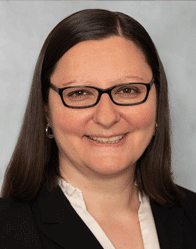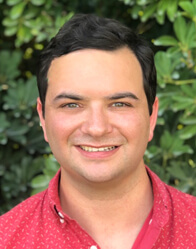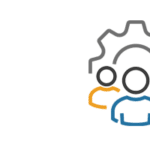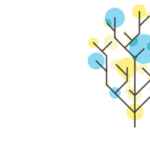Season 1 – Episode 28 – Workforce Development in STEM
In higher education, workforce development is a term used to define a people-centered approach to providing workers with resources to upskill them for long-term success. The workforce development approach is utilized in several fields, from agriculture to manufacturing to STEM. The core aim of workforce development is to cultivate prosperity for individuals, communities, and businesses. In turn, investments in workforce development programs often stem from communities, businesses, and governments at all levels. These investments provide individuals with education, development, and training opportunities to continue learning and maximizing their skills.
Episode Transcript
Click to expand/collapse
Darren Gaddis: From CITI Program, I’m Darren Gaddis, and this is On Campus. Today, what is workforce development? How does workforce development translate to STEM fields and what type of investments are we currently seeing in STEM? I spoke with Adriana Bankston, a principal legislative analyst at the University of California, office of Federal governmental Relations. Additionally, Adriana is a CEO and managing publisher of the Journal of Science Policy in Governance. Adriana earned her PhD in biochemistry, cell and developmental biology from Emory University. As a reminder, this podcast is for educational purposes only, it is not intended to provide legal advice or guidance, you should consult with your organization’s attorneys if you have questions or concerns about the relevant laws and regulations discussed in this podcast. Additionally, the views expressed in this podcast are solely those of the presenter. Hi Adriana. Thank you for joining me today.
Adriana Bankston: Thanks for having me.
Darren Gaddis: To get us started today, would you be willing to share a little about your own background and how you got interested in STEM workforce development?
Adriana Bankston: Sure, happy to do that. So I’m a former bench scientist. I obtained my PhD in 2013 from Emory and during my PhD and postdoc also, became interested in supporting the next generation of scientists and really thinking more about the system of research, not just the research itself, but the people doing research as well as policy changes that we can implement to support them in institutions and more broadly, and also policies that they can impact themselves, and so as a trainee, I got involved in those activities. So I think it’s important to involve them in this topic. My general interest has evolved from just doing bench research to really how we prepare graduate students for careers, whether it’s academic or non-academic, and this sort of divide between training and job preparation and how to bridge that gap. So when I think about workforce, what it really means is, what is the feature of science, feature of STEM in the United States? And more specifically, how we can prepare graduate students and postdocs for jobs where they can either stay in academia or use their degrees in other science professions.
Darren Gaddis: With your background in mind, what does workforce development mean to you and how does it translate to STEM fields?
Adriana Bankston: As I just described, when I think about workforce development, it means aligning training to job opportunities and preparing students for these jobs, which means teaching skills beyond just research and experiments of course, there’s a lot in this space of making sure that research is rigorous and we’re teaching them really good ways to do research, but also other skills that they’ll need if they want to become faculty in STEM fields, this means running a lab really, which is really like running a business, requires different skill sets, working in teams, managing budgets, being able to prioritize projects, and also working with other folks. So when I was in the lab, and this is true, I think in any job that you’ll be asked to mentor other people, really being able to work with and supervise other folks and also managing up, which you also need to do in the workforce, whether it’s in seven other fields, but I think in this sense, we need to think more broadly about preparing students for jobs and what that means in terms of not just research, but these other skills they’ll need too
Darren Gaddis: Diving a little deeper. How do workforce development programs between companies, institutions and federal agencies work to support the future of STEM?
Adriana Bankston: I think one way this could work is, companies can create internships for students, for example, for high school students in the sciences, so they can experience what it’s like to do research and get that hands on experience, which is really valuable. So I was just a few days ago at this Washington post slide event where they had high school interns at Abbott across the country, and really they’re developing an internship program there more globally. So I thought it was really interesting that these big companies are also thinking about this to really engage students early in STEM and give them these experiences to see what it’s like to do this, and that’s how really we’re preparing the future of science. I think also, so that’s the company side, I think also universities can help prepare students for these experiences by teaching them skills like what it’s like to be a professional, how to work with others and other skills they’ll need when they transition into a full-time position, which of course, working in industry is also different from just university.
And then, federal agencies themselves, I think it’s a holistic ecosystem here where all these players come together, but one of the things, of course, they provide funding for research and I think it would be important to include mentoring programs into grants that are awarded for faculty or specific universities to make sure that students are being trained and taught these skills when they’re leaving the lab to do these internships as well. So I think all these players work together. I think it’s something to consider that supporting the future of STEM really requires all these different players and others, sort of the government side of things, but these, I think, can feed into the university preparation that feeds into the industry and then fail agencies really supporting holistically the ecosystem.
Darren Gaddis: And with this information, how can students in STEM benefit from workforce development programs?
Adriana Bankston: So I think what comes to mind here is really internships and certificate programs that may be offered, connecting universities to industry or different groups, non-profits, and so on, where they might be able to get some experience in these areas. In universities, I think we should also have more courses, whether it’s the four year institution or elsewhere, maybe it’s at a community college where they can learn skills and different knowledge that they want to use later and transfer to a four year potentially, but I think it’s a dual approach to make sure that we provide them with courses and the knowledge they’ll need to succeed, but also these experiential opportunities, especially in companies where they can get local hands on experiences, as I said, the Abbott model, but other companies do it too across the country and having specific internships for students in companies.
Darren Gaddis: Knowing this information, what type of investments have we seen at the local, state and federal level for workforce development programs in STEM?
Adriana Bankston: Yeah, this is a big question. So I can speak to this from the research perspective where, of course, we need to be training scientists in the research skills and other skills that we’ve been talking about up to now. Investments, I think, have been made at a number of levels, and of course it depends on the state and the type of institution.
Really, I think they have been investments made over the years in local programs. I think now there’s more of a focus on regional innovation, expanding opportunities for research across the country and away from the coast to areas that may have fewer opportunities to really think about making sure that we are supporting students in a number of different types of institutions and different states. This includes specific states that’s in the middle of the country where NSF is looking to expand, for example, and programs at the federal level that have been showcased in a number of recent legislation. So for example, NSF includes program, this is one of the diversity programs that expands participation, focusing on broadening participation, and there’s other diversity programs from agencies as well. So I think thinking through really expanding these investments throughout the country, and again, NSF talks a lot about this as making sure that we are really supporting students who are in different types of institutions across the country and really keeping diversity in mind also when we think about these investments.
Darren Gaddis: Given your background, what type of policy changes would be the most beneficial in your own opinion to support STEM workforce development programs?
Adriana Bankston: I think thinking through policies that support diversity in STEM and including students, again, that may have fewer opportunities, how to really expand these opportunities in different areas across the country. The CHIPS and Science Act, which was signed into law this past August, includes some diversity provisions that focus on revenue participation and also providing access to research and education, which is really important if you want to remain competitive as a nation, and currently the N science side of the bill is authorized, to get a little bit into the legislative side here. This side is authorized, these are appropriations, meaning real money for it to really take effect, and so hopefully we’ll see this in the president’s budget in the spring, and one thing to mention the CHIPS and Science Act, because it’s really a large legislation that has a potential to make a big impact in science, it contains large increases in the NSF budget that can help diversity across the board.
Interestingly, I heard a recent discussion put on by issues in science technology and the Consortium for Science, Policy and Outcomes or CSPO at ASU. They brought up how really they’ll need to strategize, which I think is true, they’ll need to really strategize in terms of a number of different programs that are in the bill to make sure that there’s not duplication, that the programs that are created are efficient and help talent in the United States and thinking through more how to support a STEM workforce, again, developing programs that we need, but not duplicating water exists.
Something that I’m proud of is that through my role, I’ve been able to contribute to a section of the graduate education section of the bill, which provides postdoctoral researchers professional development funding. Postdocs, this is another area that we could discuss, but they’ve been traditionally more neglected, of course, it’s great that there’s a lot of focus on graduate students, but postdocs being really experts in the field and they’re still in training somewhat. So I think being able to really include postdocs in the ecosystem of what does is it mean to develop the workforce is really important. So I’m excited that this is in the bill and hopefully we’ll see these programs being enacted next year.
Darren Gaddis: In your opinion, how can the next generation make an impact in STEM workforce development programs in terms of policy changes?
Adriana Bankston: So this kind of piggybacks and the previous question, so I think there’s different levels here. The first is, if you are a student in the university, you can impact really policy changes at your institution. So when I was at postdoc, I was in the postdoc committee, for example, which is really a way to learn about what policy changes are implemented in the university, how that affects really your lab and the research that’s being done in the university, you may be able to impact that by being in a committee like this where you can lend your voice to the larger conversation of the institution. So keeping this in mind that you as a trainee, there may be opportunities to engage in leadership roles at the university. Another way is through nonprofits, societies, or other organizations that work on issues that you’re interested in or the future of science in general, like [inaudible 00:12:07]. Many other universities and organizations also have opportunities for getting involved, it really just depends on what’s there locally, but these societies also provide some opportunities for engagement.
I would also say getting involved with your local government or state government, contacting your representative to talk about issues that you experience that’s important. Again, they’re here to listen to you as a constituent and often like to hear from students and the issues that you like to bring up to them, especially if they’re interested in helping science move along and it’s good to contact them as well.
Darren Gaddis: As a closing thought, what else should we know about STEM workforce development programs?
Adriana Bankston: Yeah, so in the closing, what I would say that workforce development in STEM is really a national issue that will require everyone to contribute, meaning different stakeholders, not just universities, but also industry, nonprofits, federal agencies and so on, it’s really a holistic ecosystem that we need to think more broadly about, all these players being involved in supporting the future of STEM.
I think as we discussed today, this also needs to happen at different levels, both locally and nationally, and keeping diversity in mind and ways to offer more opportunities, that’s something to keep top of mind, regardless of which sector you’re in. So far, I think in this environment and working in policy, I’m encouraged to see that there is support for science that exists and looking forward to seeing what happens in the spring with appropriations, hopefully to support legislation like CHIPS and Science and others, and how we can make science better through current and future programs, and to close the loop, I’ll go back to original factor for this discussion is that we should not lose sight of the human factor and the people that are doing science, because training the next generation workforce really can help everyone succeed and will maintain the United States as a leader in science and technology as well.
Darren Gaddis: Adriana, thank you for joining me today.
Adriana Bankston: Thank you so much.
Darren Gaddis: Be sure to follow, like and subscribe to On campus with CITI Program to stay in the know. I also invite you to review our content offerings regularly as we are continually adding new courses and webinars that may be of interest to you. All of our content is available to you anytime through organizational and individual subscriptions. You may also be interested in CITI Program’s, Effectively Communicating Research Results to Non-Scientific Audiences webinar. Please visit CITI Program’s website to learn more about all of our offerings.
How to Listen and Subscribe to the Podcast
You can find On Campus with CITI Program available from several of the most popular podcast services. Subscribe on your favorite platform to receive updates when episodes are newly released. You can also subscribe to this podcast, by pasting “https://feeds.buzzsprout.com/1896915.rss” into your your podcast apps.
Recent Episodes
- Season 1 – Episode 27: Academic Career Pathways (Part 2)
- Season 1 – Episode 26: Academic Career Pathways (Part 1)
- Season 1 – Episode 25: Title IX: Women in Athletics
- Season 1 – Episode 24: Universal Design: Campus Infrastructure
Meet the Guest

Adriana Bankston, PhD – University of California
Adriana Bankston is a Principal Legislative Analyst at the University of California Office of Federal Governmental Relations. Additionally, Adriana is the CEO & Managing Publisher of the Journal of Science Policy & Governance. Adriana earned her PhD in Biochemistry, Cell and Developmental Biology from Emory University.
Meet the Host

Darren Gaddis, Host, On Campus Podcast – CITI Program
He is the host of the CITI Program’s higher education podcast. Mr. Gaddis received his BA from University of North Florida, MA from The George Washington University, and is currently a doctoral student at Florida State University.










